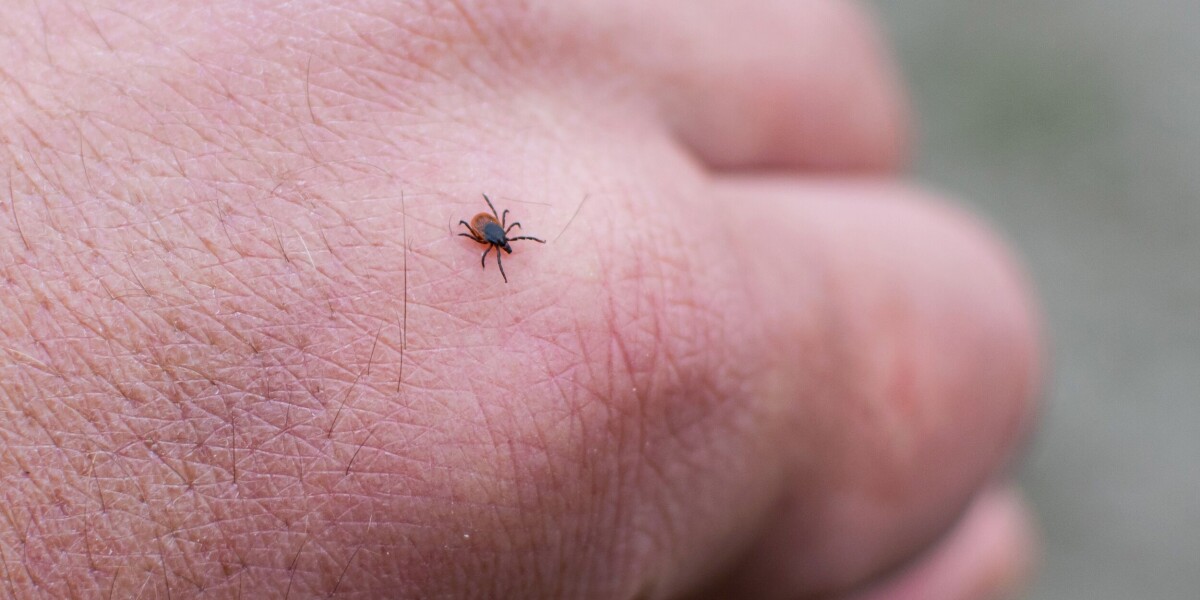
France’s new tick tracker: see if people have been bitten near you
- Select a language for the TTS:
- UK English Female
- UK English Male
- US English Female
- US English Male
- Australian Female
- Australian Male
- Language selected: (auto detect) - EN
Play all audios:

A NEW MAP SHOWS THE AREAS OF FRANCE WHERE PEOPLE ARE MOST LIKELY TO REPORT TICK BITES France has launched a new tracker that aims to make it easier to see the areas in France where people
are most likely to report tick bites. Ticks can be dangerous as they can spread diseases like Lyme. The tracker comes from CiTIQUE, a participative research programme that was launched by
public agriculture and food research institute INRAE in 2017, to better understand ticks’ behaviour and the diseases they may carry in France. People living in France have been encouraged to
report any tick bites to CiTIQUE, whether to humans or animals. Researchers have even invited people to send the offending tick to them by post, so they can compile more detailed data. TICK
REPORTS Overall, from January 2017 to April 2023, the CiTIQUE programme received: * 72,141 reports of tick bites (61,220 on humans, and 10,921 on animals) * Of these, 32,286 were men,
28,250 were women, and 11,605 did not specify their gender * 22,944 letters received, some of which included ticks * 6,069 reports of dogs being bitten, 3,727 cats, and 1,125 other animals
The full results of the tracker have now been PUBLISHED ONLINE HERE. The map shows each region of France (e.g. Brittany, Nouvelle-Aquitaine, Grand Est…). Hovering over each region reveals
the number of reports for that region, as well as the breakdown of bites on humans and animals. _The map divides France by region and shows the number of tick bite reports. There are also
pie charts showing the age of the person bitten, the environment they were in, and what they were doing_ _Photo credit: CI-TIQUE-TRACKER_ WHERE WERE THE MOST BITES REPORTED? The Grand Est
region has reported the greatest number of bites, closely followed by Auvergne-Rhône-Alpes and Ile-de-France. The lowest number of reports came from Provence-Alpes-Côte-d’Azur and Corsica.
In order of the number of bites, the regions are: * GRAND EST: 11,556 bites reported * AUVERGNE-RHÔNE-ALPES: 8,719 * ILE-DE-FRANCE: 5,958 * OCCITANIE: 4,392 * BRITTANY: 3,731 * NORMANDY:
2,948 * HAUTS-DE-FRANCE: 2,914 * CENTRE-VAL DE LOIRE: 2,474 * PAYS DE LA LOIRE: 1,926 * PROVENCE-ALPES-CÔTE D’AZUR: 1,041 * CORSICA: 98 BITES: WHERE, DOING WHAT, AND HOW OLD? The tracker
also has options down the left-hand sidebar, which lets you see: * The environment where the tick bite happened * The activity the person or animal was doing when they were bitten * The age
of the person or animal when bitten * The date of the bite Most tick bites happened in forest environments (46%), followed by family spaces (31%), and fields (13%). Just 10% of bites
happened elsewhere. Activities-wise, the majority (54%) were bitten while taking part in “leisure activities”, while 38% were bitten at home. Just 6% were bitten while taking part in
professional activities. Age-wise, there is a spike of bites among people aged five to 10, with another peak for people aged 30 to 40. This could partly be a result of families with small
children taking part in activities outdoors. HOW CAN I AVOID TICK BITES IN FRANCE? Advice includes: Use an anti-tick spray * Wear long, light-coloured clothing to cover excess skin and allow
you to see ticks if they appear * Make sure children wear hats, especially if they are playing in the grass or have their heads near tall bushes and grasses * When you return from outside,
wash your clothes at 60C, or tumble dry them for at least an hour, as ticks do not like dry heat * Carefully check your skin, especially in folds of skin or private areas, to check there are
no ticks * Check the fur or skin of pets too, as they can become tick ‘hosts’ and bring them indoors READ MORE: LYME DISEASE IN FRANCE: OFFICIAL ADVICE ON HOW TO AVOID A TICK BITE WHAT IF I
THINK I HAVE BEEN BITTEN? If you do suspect or know you have been bitten, you are advised to: * Pull the tick ‘head’ out with tweezers, taking care to remove it in one quick movement,
without crushing its body or head * Check the tick bite area of your skin and stay alert to your general health and any symptoms over the next month; tick bites that cause Lyme can often
lead to a ‘bull’s eye’ red ring around the bite * Ask a health professional to remove the tick as soon as possible if you are not able to remove it yourself * Request preventative antibiotic
treatment against Lyme disease within the next 24-48 hours, from your nearest doctor or health professional, to avoid developing the disease long-term. RELATED ARTICLES LYME DISEASE: HOW TO
MINIMISE RISK OF TICKS IN YOUR GARDEN IN FRANCE WHERE IN FRANCE YOU ARE MOST AT-RISK FROM LYME DISEASE TICKS FRENCH HEALTH EXPERTS FEAR SPREAD OF POTENTIALLY DEADLY TICK
